GrabCAD

Team Positive Pressure (Ventilator Mk. 1)
by GrabCAD
Last crawled date: 1 year, 11 months ago
*READ ME: Please Check Out Our Project Proposal*
CAD Assembly Name: FullCAD.ASM
Description:
The device works by receiving an input via the touchscreen display from the doctor as to which ventilator mode and adjustable parameters to take. This input is processed by a Raspberry Pi, which then actuates the delivery of room air and supplemental oxygen to a piston cylinder. Timing for the actuation of the pinch valves controlling these inputs determine the fraction of inspired oxygen (FiO2) being delivered to the patient. This proportion is tuned to reach the desired amount based on a reading from an O2 sensor in the inspiratory line. Once the mixture is in the cylinder, the piston head compresses by action of a crankshaft-style mechanism driven by a stepper motor. This compression forces the air mixture into the inspiratory line. We can control how much volume of air is delivered by how much the piston displaces while the inspiratory valve is open. We can also control pressure by lowering the piston head to whatever volume in the piston we’d like while holding the inspiratory valve closed. This allows us to support both pressure and volume control.
A custom pressure relief valve keeps the inspiratory line under 60 cm H2O. The air eventually makes its way through a filter, and into a y-valve connecting the expiratory and inspiratory line to tubing connected to the ET tube. After the y-valve and before the ET tube, the mixture flows through a custom venturi tube flow meter that records the pressure, flow rate, and tidal volume of the air before it enters the patient. This venturi tube flow meter also enables the ventilator to detect a pressure drop when the patient is initiating a breath, thus allowing the ventilator to support spontaneous ventilation.
After inhalation is completed, a pinch valve in the expiratory line opens allowing gases in the line to escape through a custom positive end-expiratory pressure (PEEP) valve.
By: Ed Chung, Prerna Gupta, James Ho, Jasmine Kamdar, Ali Kight, Aditya Sudhakar, Chen Chia (Charles) Wang, Jinfay Yuan
CAD Assembly Name: FullCAD.ASM
Description:
The device works by receiving an input via the touchscreen display from the doctor as to which ventilator mode and adjustable parameters to take. This input is processed by a Raspberry Pi, which then actuates the delivery of room air and supplemental oxygen to a piston cylinder. Timing for the actuation of the pinch valves controlling these inputs determine the fraction of inspired oxygen (FiO2) being delivered to the patient. This proportion is tuned to reach the desired amount based on a reading from an O2 sensor in the inspiratory line. Once the mixture is in the cylinder, the piston head compresses by action of a crankshaft-style mechanism driven by a stepper motor. This compression forces the air mixture into the inspiratory line. We can control how much volume of air is delivered by how much the piston displaces while the inspiratory valve is open. We can also control pressure by lowering the piston head to whatever volume in the piston we’d like while holding the inspiratory valve closed. This allows us to support both pressure and volume control.
A custom pressure relief valve keeps the inspiratory line under 60 cm H2O. The air eventually makes its way through a filter, and into a y-valve connecting the expiratory and inspiratory line to tubing connected to the ET tube. After the y-valve and before the ET tube, the mixture flows through a custom venturi tube flow meter that records the pressure, flow rate, and tidal volume of the air before it enters the patient. This venturi tube flow meter also enables the ventilator to detect a pressure drop when the patient is initiating a breath, thus allowing the ventilator to support spontaneous ventilation.
After inhalation is completed, a pinch valve in the expiratory line opens allowing gases in the line to escape through a custom positive end-expiratory pressure (PEEP) valve.
By: Ed Chung, Prerna Gupta, James Ho, Jasmine Kamdar, Ali Kight, Aditya Sudhakar, Chen Chia (Charles) Wang, Jinfay Yuan
Similar models
grabcad
free

Flow Power
...onnections to the element of the proposed ventilator are not illustrated at this stage so as not to obscure the main features.
grabcad
free

BiPAP Ventilator with Mask Hookup
...proper respiration of patients. then the air is released into the surrounding environment. the patient has just taken one breath.
grabcad
free

portable Ventilator design, (covid 19 )
...ve (4 - 20 ma) .
in device exist pressure guage (cmh2o) for mesure inspiratory pressure , expiratory pressure , flow rate control
grabcad
free

DoF Analog Ventilator
...covid-19 crisis. patients in disparate locations and circumstances need similar levels of care, so this design attempts to decouple...
grabcad
free

CoVent 19 - Team DJSE
... an additional piston and cylinder, in series, will monitor utilize the feedback information to extract the air from the patient.
grabcad
free

Piston Ventilator
... parts (others to be 3-d printed). currently, the mechanical portion is mostly prototyped and the electronics are in development.
grabcad
free

Expiration Cut-off Valve
...ure in inspiration line relieved through pressure pull-down holes
7. piston returns to resting position, inspiration line closed
grabcad
free

Pneumarail
...tem will also contain simple control knobs to manage compression depth and rate by the stepper motor powered ambu bag compressor.
grabcad
free

For Stroke Petrol Engine
...s to top dead centre while the exhaust valve is open. this action expels the spent fuel-air mixture through the exhaust valve(s).
grabcad
free

Nefos
...ta to doctor. this ventilator supply with oxygen tank and battery backup when unplug its still running in certain amount of time.
Mk
3d_export
$5

scorpion mk
...scorpion mk
3dexport
scorpion mk .zpr,stl,obj,stl,
turbosquid
$6

MK 11
...turbosquid
royalty free 3d model mk 11 for download as blend on turbosquid: 3d models for games, architecture, videos. (1223895)
3d_export
$5

Qubeley MK-II
...qubeley mk-ii
3dexport
3d lowpoly type qubeley mk-ii
turbosquid
$3

MK killer
...lty free 3d model mk killer for download as fbx, obj, and 3ds on turbosquid: 3d models for games, architecture, videos. (1638698)
turbosquid
$25

Valentine Mk
... available on turbo squid, the world's leading provider of digital 3d models for visualization, films, television, and games.
turbosquid
$10

Mk-16
... available on turbo squid, the world's leading provider of digital 3d models for visualization, films, television, and games.
turbosquid
$7

Mk-16
... available on turbo squid, the world's leading provider of digital 3d models for visualization, films, television, and games.
turbosquid
free

mk-2
... available on turbo squid, the world's leading provider of digital 3d models for visualization, films, television, and games.
3d_export
$25

Merkava MK 1 3D Model
... 1 3d model
3dexport
merkava mk-1 tank low-poly model maya mk1 mk mk-2 mk-3 israel army
merkava mk 1 3d model rom64 5311 3dexport
3ddd
$1
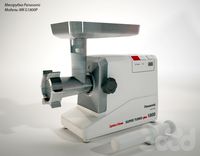
мясорубка Panasonic MK G1800P
...мясорубка panasonic mk g1800p
3ddd
мясорубка , panasonic
мясорубка panasonic mk g1800p
Ventilator
3d_export
$5

ventilation
...ventilation
3dexport
5 types of ventilation
3d_export
$10

ventilation
...ventilation
3dexport
5 types of ventilation and engineer communication
3d_ocean
$5

Ventilator
...pliance blower desk detailed electric electro fan hvac oscillating realistic table ventilator
high poly, very detailed ventilator
3d_export
$25
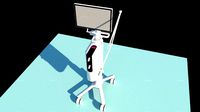
ventilator
...ventilator
3dexport
turbosquid
$20
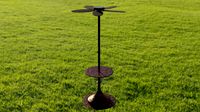
Ventilator
... free 3d model ventilator for download as blend, fbx, and obj on turbosquid: 3d models for games, architecture, videos. (1612370)
turbosquid
$43
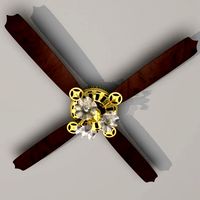
Ventilator
... available on turbo squid, the world's leading provider of digital 3d models for visualization, films, television, and games.
turbosquid
$25

ventilation
... available on turbo squid, the world's leading provider of digital 3d models for visualization, films, television, and games.
turbosquid
$4
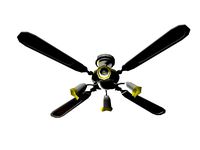
Ventilator
... available on turbo squid, the world's leading provider of digital 3d models for visualization, films, television, and games.
3d_export
$5

ventilation and columns
...ventilation and columns
3dexport
ventilation and columns.<br>3 types of ventilation<br>2 types of columns
archive3d
free
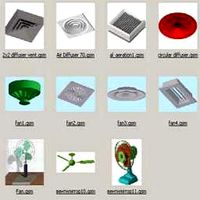
Ventilators 3D Model
...ventilators 3d model
archive3d
ventilation ventilation equipment hvac
Pressure
3d_export
$5

pressure gauge
...pressure gauge
3dexport
pressure gauge
3d_export
$40

Pressure Vessel
...pressure vessel
3dexport
pressure vessel assembly render 3d modelling design
3d_export
$5
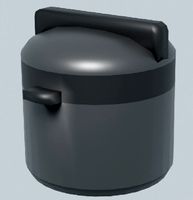
Pressure cooker
...pressure cooker
3dexport
simple low-poly pressure cooker model. not removable parts.
3d_export
$5

protected pressure gauge
...protected pressure gauge
3dexport
protected pressure gauge
turbosquid
$25
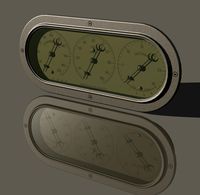
Vintage US Gauge Co Cluster, Pressure, Oil Pressure & Vacuum Fuel Pressure
...re for download as 3ds, dxf, obj, c4d, fbx, 3dm, dwg, and stl on turbosquid: 3d models for games, architecture, videos. (1367117)
turbosquid
$20
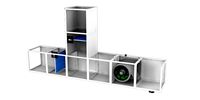
PRESSURIZATION FAN
...
royalty free 3d model pressurization fan for download as max on turbosquid: 3d models for games, architecture, videos. (1269534)
turbosquid
$20
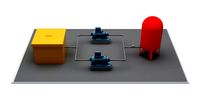
Pressurization Pumps
...oyalty free 3d model pressurization pumps for download as max on turbosquid: 3d models for games, architecture, videos. (1270559)
turbosquid
$23
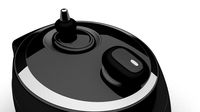
Pressure cooker
...ee 3d model pressure cooker for download as max, obj, and fbx on turbosquid: 3d models for games, architecture, videos. (1440991)
turbosquid
$25

pressure cooker
... available on turbo squid, the world's leading provider of digital 3d models for visualization, films, television, and games.
turbosquid
$3

Pressure Controller
... available on turbo squid, the world's leading provider of digital 3d models for visualization, films, television, and games.
Team
design_connected
$13
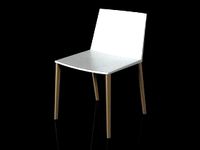
Team
...team
designconnected
arper team computer generated 3d model. designed by lievore, alberto.
3ddd
$1
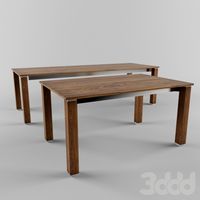
Team 7
...team 7
3ddd
team 7
моделилось с кталога team 7
3ddd
free

team 7
...team 7
3ddd
team 7
стол фабрики team 7.
типы размеров /900,1000/x/1750,2000,2250/x/750/
раздвигается +600 или +1200
3d_export
$99

basketball team
...basketball team
3dexport
basketball team 3d model. rigged. include obj, fbx files.
design_connected
$18
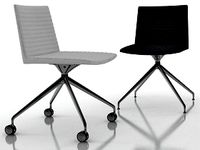
Team - trestle
...team - trestle
designconnected
arper team - trestle computer generated 3d model. designed by lievore, alberto.
3ddd
$1

TEAM 7 Atelier
...team 7 atelier
3ddd
team 7 , стол
производитель team 7
модель atelier
3ddd
$1
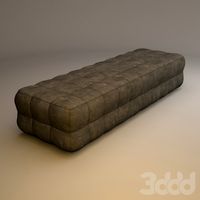
Банкетка Flex Team
... , flex team
http://www.abitant.com/products/banketka-flex-team-2014-kilt-pouf
3d_export
$65

mountaineering team
...mountaineering team
3dexport
simple rendering of the scene file
3d_export
$65

Camel team
...camel team
3dexport
simple rendering of the scene file
3ddd
$1

Стол Joha-team - BaumArt
... joha , team
стол от joha-team, под названием baumart
Positive
3ddd
$1
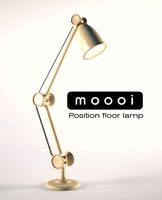
Moooi | Position
...moooi | position
3ddd
moooi , position profi
moooi position floor lamp
design_connected
$20
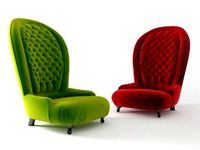
Pole Position
...e position
designconnected
l'abbate pole position armchairs computer generated 3d model. designed by luigi caccia dominioni.
turbosquid
free
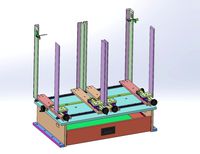
Positioning screw mechanism
...del positioning screw mechanism for download as sldas and ige on turbosquid: 3d models for games, architecture, videos. (1676142)
3d_export
$5
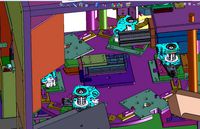
six position riveting machine
...six position riveting machine
3dexport
six position riveting machine
3ddd
$1

Moooi Position wall lamp
...moooi position wall lamp
3ddd
moooi , position wall lamp
turbosquid
$9

Clappers positioning structure
... clappers positioning structure for download as ige and sldpr on turbosquid: 3d models for games, architecture, videos. (1223752)
3ddd
free

Cilek, модель positive oak
...cilek, модель positive oak
3ddd
cilek
детская фирмы cilek, модель positive oak
turbosquid
$98

Coat in 6 positions
... available on turbo squid, the world's leading provider of digital 3d models for visualization, films, television, and games.
turbosquid
$39

Position of Gynoecium on the Thalmus
... available on turbo squid, the world's leading provider of digital 3d models for visualization, films, television, and games.
turbosquid
$6
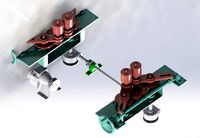
Gear positioning model
...sitioning model for download as 3ds, ige, obj, stl, and sldas on turbosquid: 3d models for games, architecture, videos. (1227211)
1
turbosquid
$69

armchairs(1)(1)
... available on turbo squid, the world's leading provider of digital 3d models for visualization, films, television, and games.
turbosquid
$15
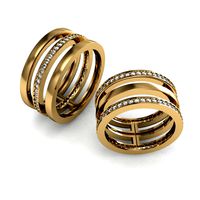
ring 1+1
... available on turbo squid, the world's leading provider of digital 3d models for visualization, films, television, and games.
turbosquid
$10
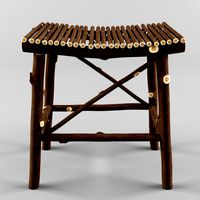
chair(1)(1)
... available on turbo squid, the world's leading provider of digital 3d models for visualization, films, television, and games.
turbosquid
$8

Chair(1)(1)
... available on turbo squid, the world's leading provider of digital 3d models for visualization, films, television, and games.
turbosquid
$2

RING 1(1)
... available on turbo squid, the world's leading provider of digital 3d models for visualization, films, television, and games.
turbosquid
$1

house 1(1)
... available on turbo squid, the world's leading provider of digital 3d models for visualization, films, television, and games.
turbosquid
$1

Table 1(1)
... available on turbo squid, the world's leading provider of digital 3d models for visualization, films, television, and games.
turbosquid
$59
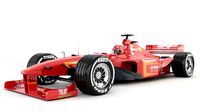
Formula 1(1)
...lty free 3d model formula 1 for download as max, fbx, and obj on turbosquid: 3d models for games, architecture, videos. (1567088)
design_connected
$11

No 1
...no 1
designconnected
sibast no 1 computer generated 3d model. designed by sibast, helge.
turbosquid
$2
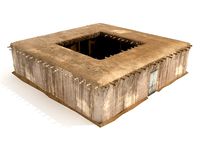
desert house(1)(1)
...3d model desert house(1)(1) for download as 3ds, max, and obj on turbosquid: 3d models for games, architecture, videos. (1055095)
